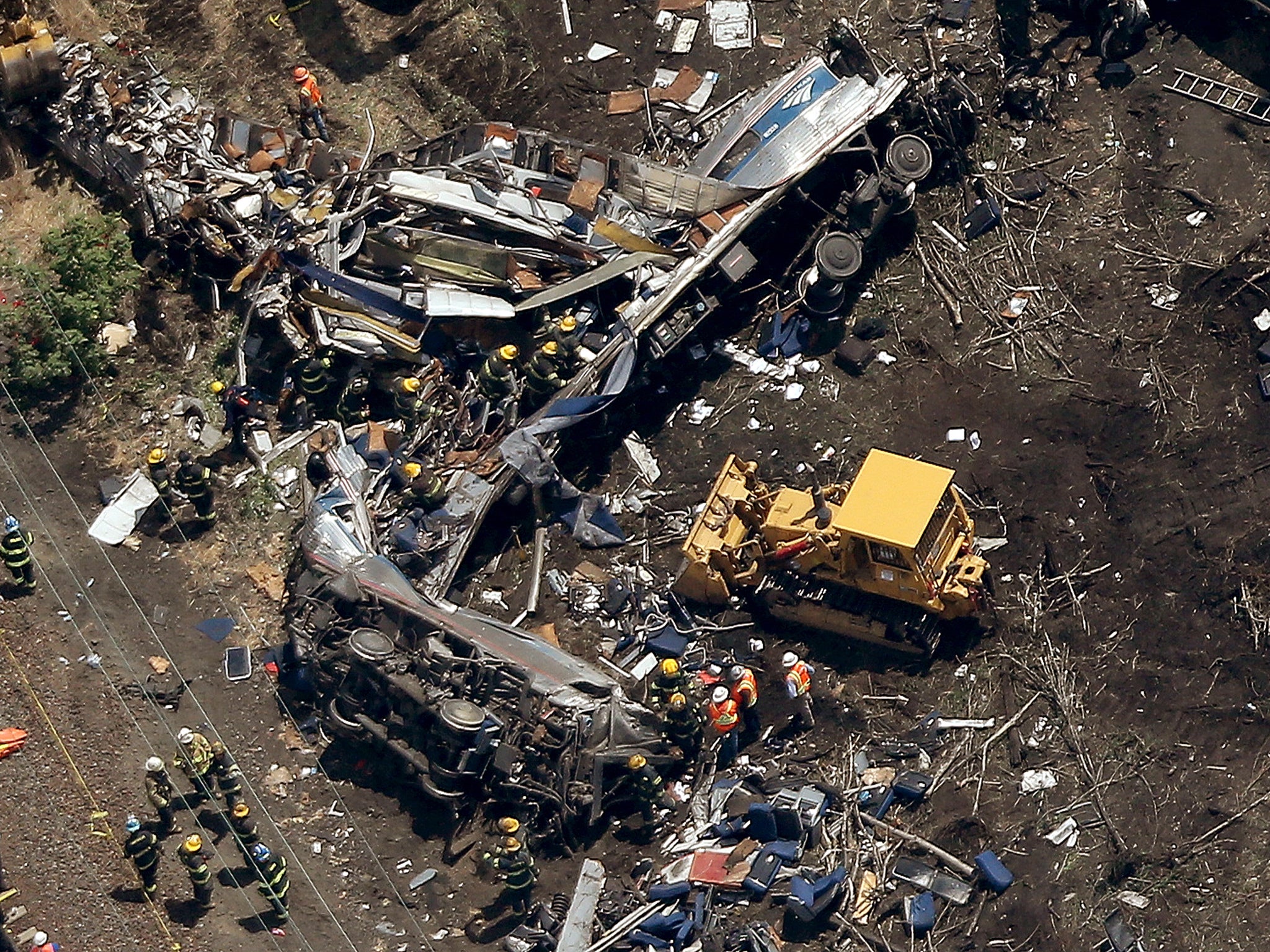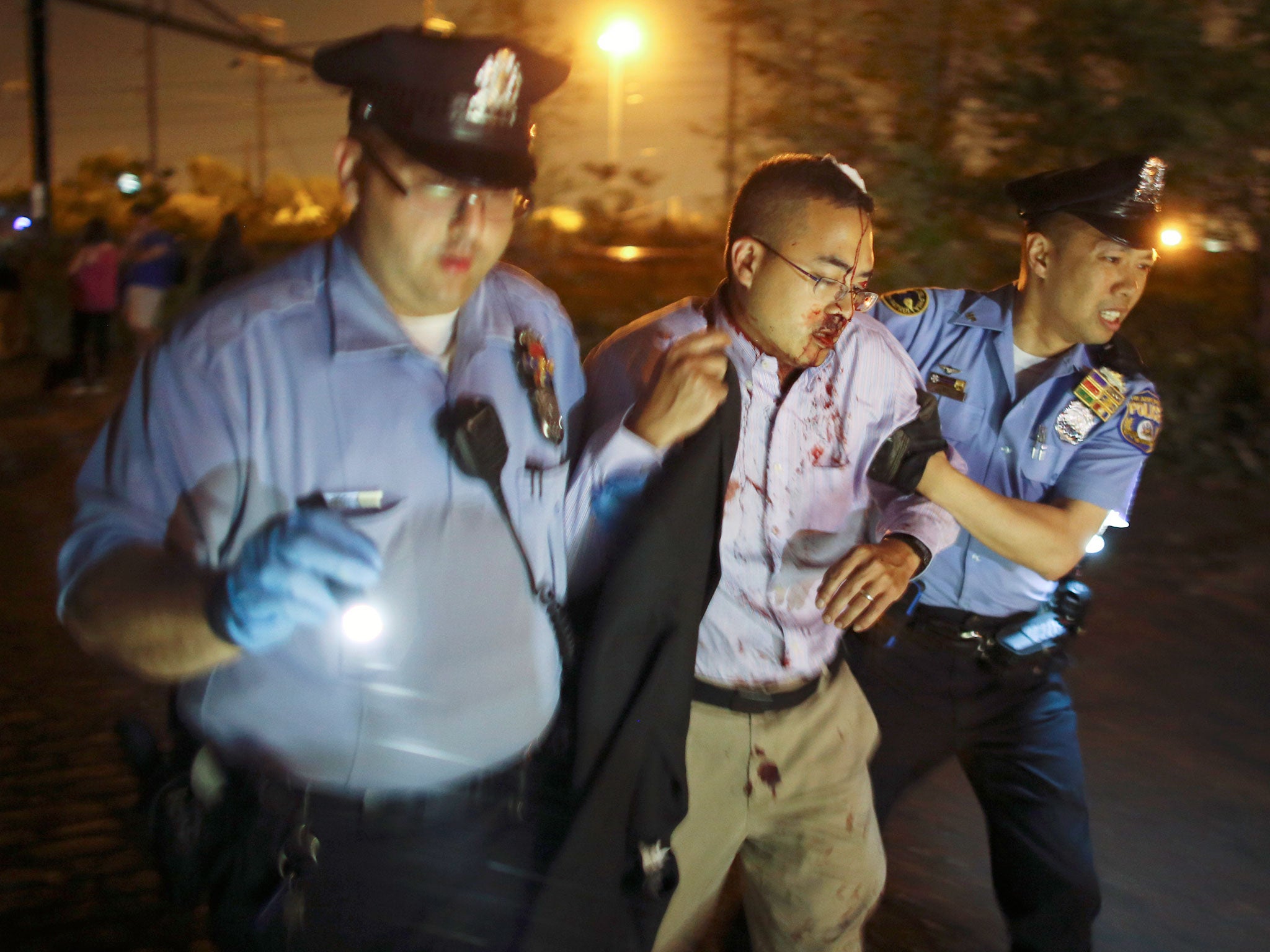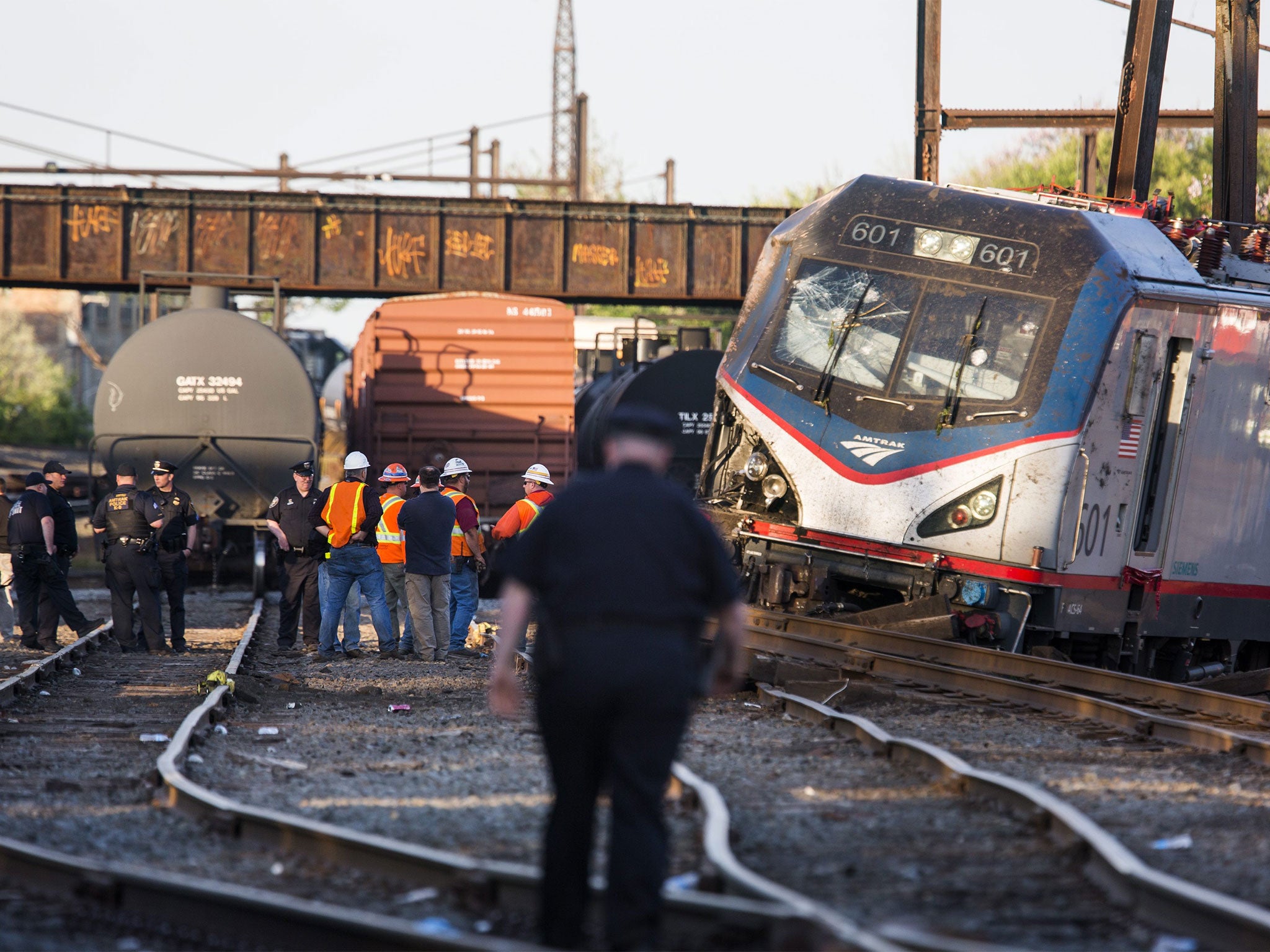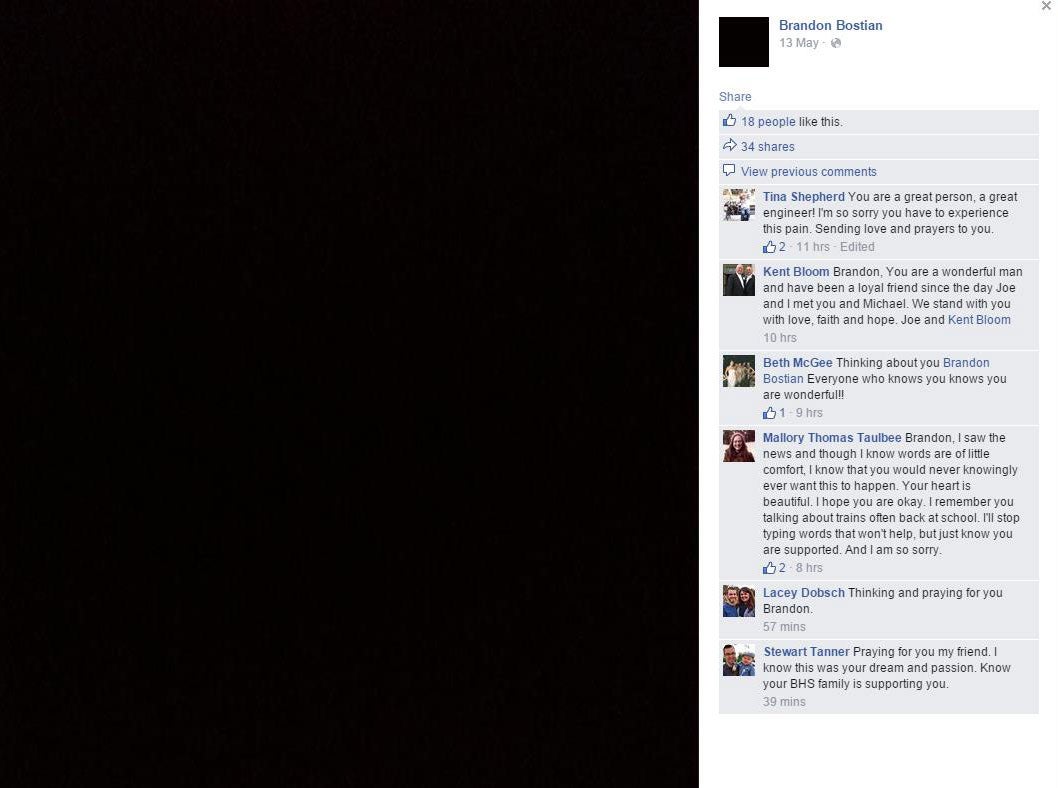Amtrak crash: Driver Brandon Bostian warned about track safety and potential for 'serious mistakes' before deadly derailment
'Serious mistakes happen...where railroads are operated by humans'

The driver at the helm of Amtrak train that derailed on Tuesday in the US, killing eight people and injuring more than 200, had previously criticised rail companies’ safety measures and warned of the “frightening” potential for human error.
Brandon Bostian, 32, does not remember the crash according to his lawyer, who said he is co-operating with a National Transportation Safety Board (NTSB) investigation as well as a probe by police in Philadelphia.
All seven carriages of the Washington-to-New York train left the tracks after it sped up from 70mph to more than 100mph – double the speed limit – as it approached a sharp bend in the minute before the crash.
Mr Bostian, who started working for Amtrak in 2006 as a conductor before becoming an engineer in 2010, wrote on Facebook about his meticulous use of checklists in the train cabin before starting a journey.
A post seen by the Los Angeles Times said: “At work, I run through a five-item checklist after I inspect my engine and before I touch anything. Then a 10-item checklist before I move the train an inch, and another four-item list at every station stop.”
He also made frequent posts on online forums used by train drivers and railway workers where he raised safety concerns.
In a post in 2013 about track warrants, which are issued to let trains know which parts of shared main lines they can use, he said “unforgivable” mistakes can happen because of the potential for human error.
“Most railroaders go a career without a material rule violation, but when you consider the thousands of movements that happen a day, well, sometimes even serious mistakes happen,” Mr Bostian wrote on Trainorders.com.
“It's that whole thing where railroads are operated by humans.”
A post on the same website two years before criticised train companies for not installing systems that could have prevented Tuesday’s derailment.
“I wish the railroads had been more proactive in adopting active signalling systems from the get-go,” it said.
“But the reality is that they have had nearly a hundred years of opportunity to implement SOME sort of system to mitigate human error, but with a few notable exceptions have failed to do so.”
Robert Sumwalt, from the NTSB, admitted that the derailment could have been avoided by an advanced safety system called “positive train control” (PTC), which automatically slows or stops trains moving too fast or heading towards a hazard.
Amtrak said it aims to have the technology up and running between Washington and Boston by the end of the year, as required by law, but currently only has it intermittently along the line.

Mr Bostian wrote on another occasion about the prospect of longer shifts making crews too tired to operate trains safely.
He wrote: “Everyone wants an extension to hours of service to avoid inconvenience, but what will you say when the crew that’s been on duty for longer than 12 hours accidentally falls asleep and passes a stop signal and rear-ends a loaded hazmat train, killing dozens or hundreds of people?
“A crew is probably not any less safe after 12 hours and one minute than they were a few moments ago, but you have to draw that line somewhere.”
In a similar thread, Mr Bostian reportedly wrote that working longer hours was too risky because engineers could “slip up and cause loss of life due to poor judgement”.

Mr Bostian fully engaged the train's emergency brakes seconds before the wreck and tests before it left Union Station in Washington on Tuesday found no problems with the system.
A track inspection a day before the accident found nothing unusual on that part of track, the NTSB said, and the train was running on time.
Mr Bostian has not yet spoken publicly about the accident but changed his Facebook profile picture to a black square following the crash.
His lawyer, Robert Goggin, said the driver was unable to recall hitting the brakes or much else about the derailment and had not been using his phone, drinking or taking drugs.
“He remembers coming into the curve, he remembers attempting to reduce speed, but thereafter he was knocked out just like all the other passengers on the train,” he told ABC.

Mr Bostian, who suffered a concussion and head injuries, is expected to speak to police and the NTSB in the coming days.
A friend, Stefanie McGee, said he had always wanted to be an engineer or a conductor.
“He would go on vacation and bring back subway maps,” she added. “He would go places with his family and he would talk about the trains instead of the places.”
Will Gust, who belonged to a fraternity with Mr Bostian during their time at university together, said: “I have nothing but good things to say about Brandon. He is a very conscientious person, one of the most upstanding individuals that I know.”
The first funeral was being held on Friday morning, for 20-year-old US Naval Academy Midshipman Justin Zemser.
Joseph Boardman, president and CEO of Amtrak, said: “With truly heavy hearts, we mourn those who died. Their loss leaves holes in the lives of their families and communities.
“Amtrak takes full responsibility and deeply apologises for our role in this tragic event.”
Additional reporting by agencies
Join our commenting forum
Join thought-provoking conversations, follow other Independent readers and see their replies
Comments